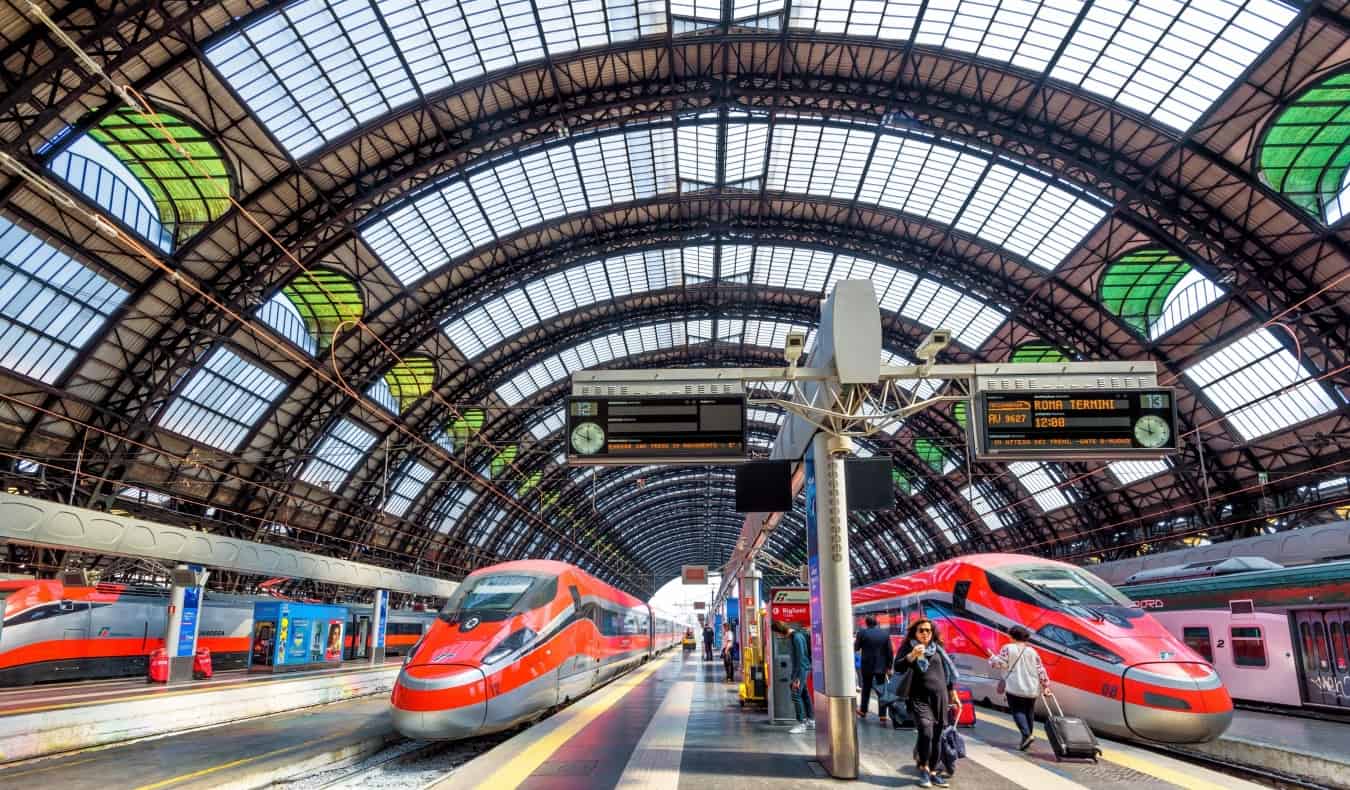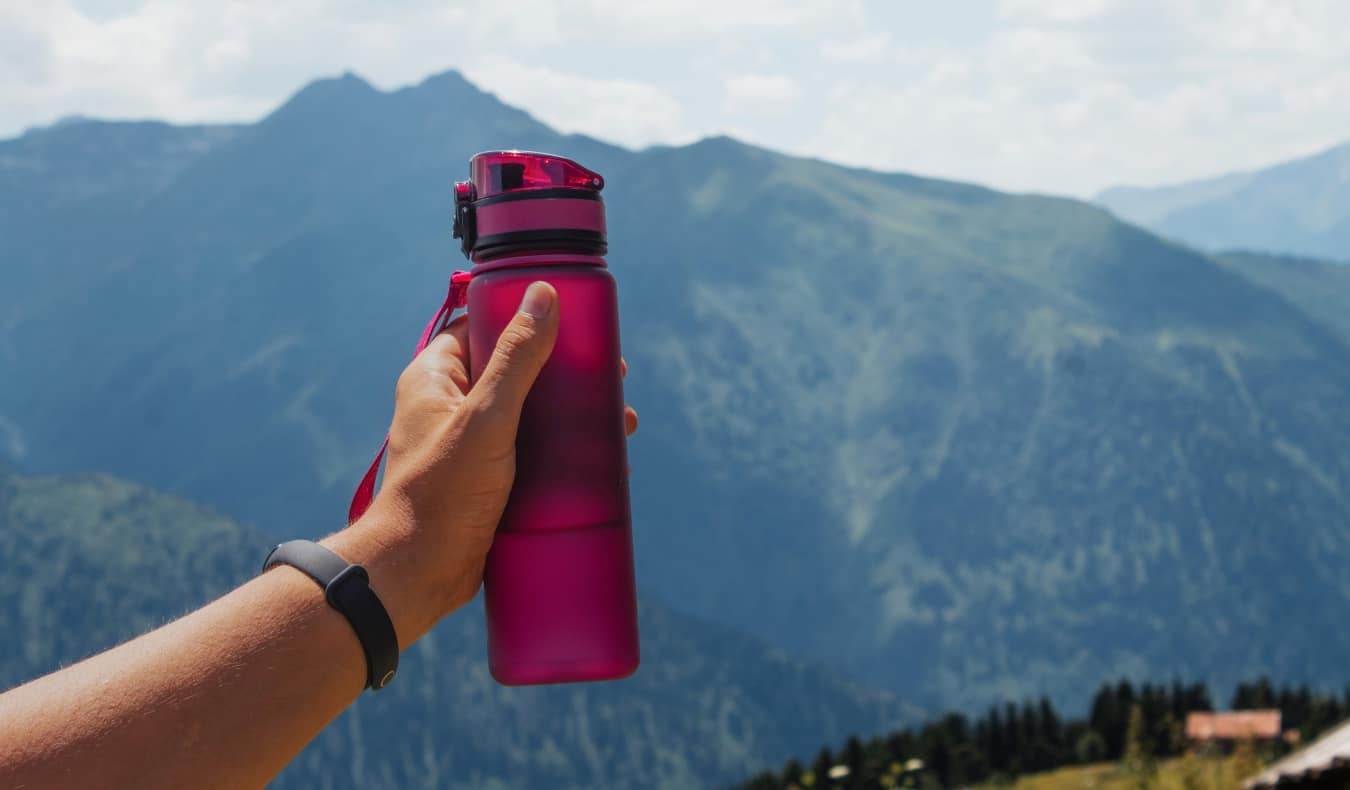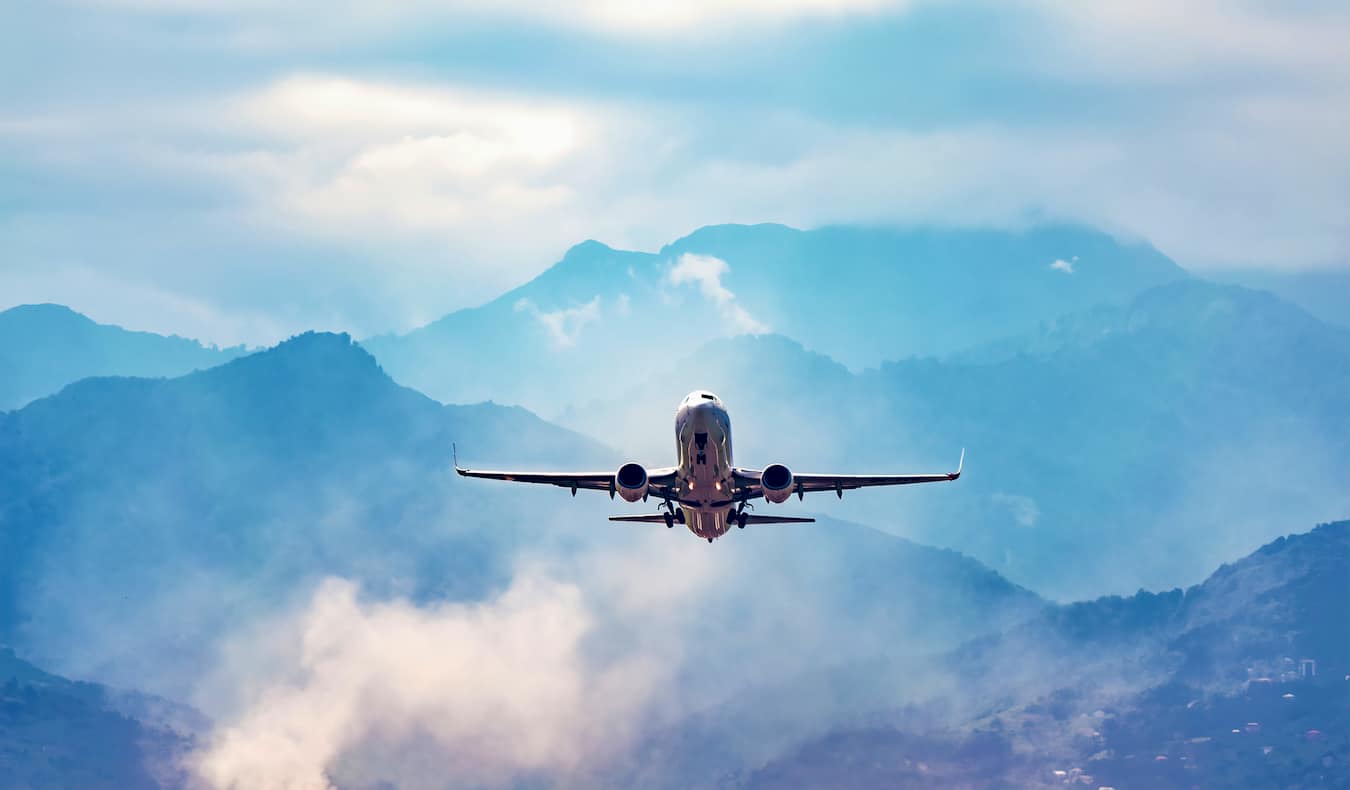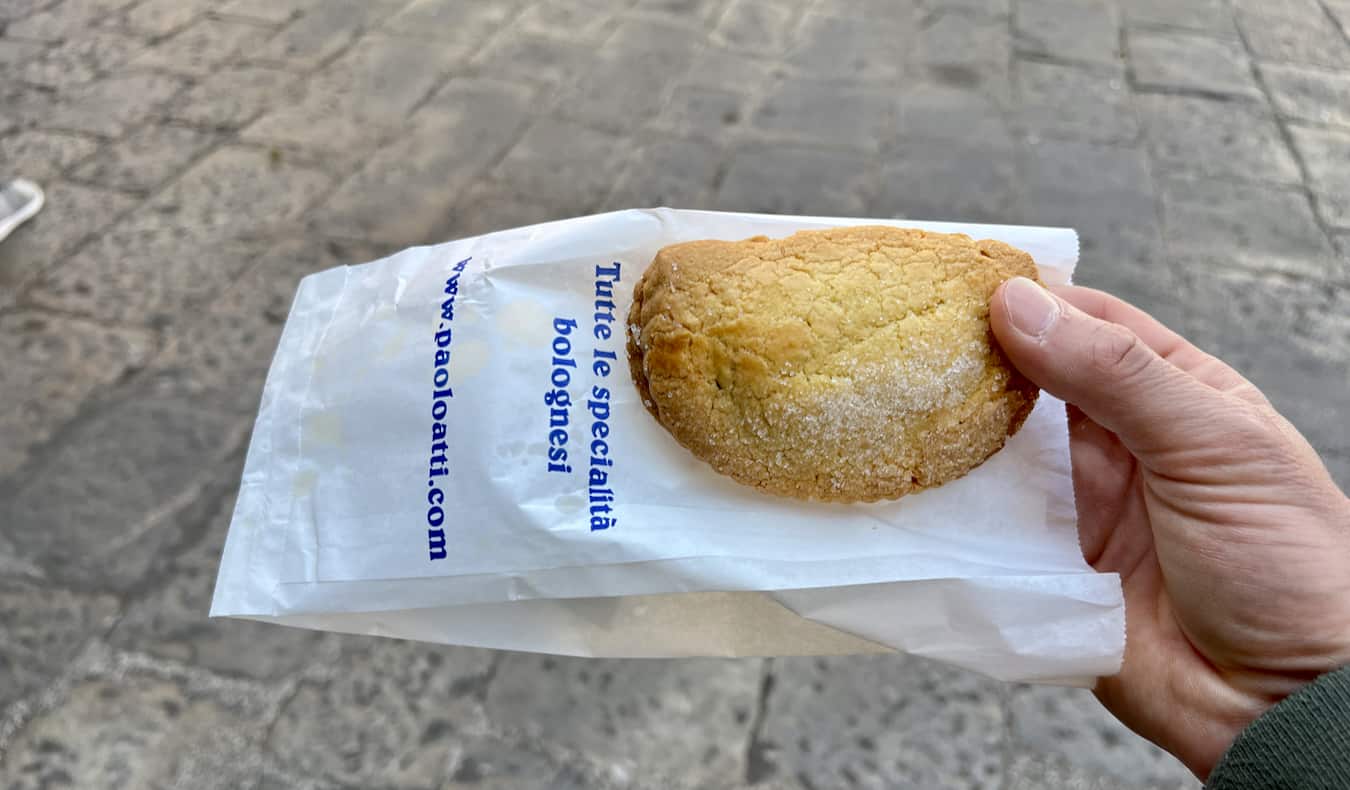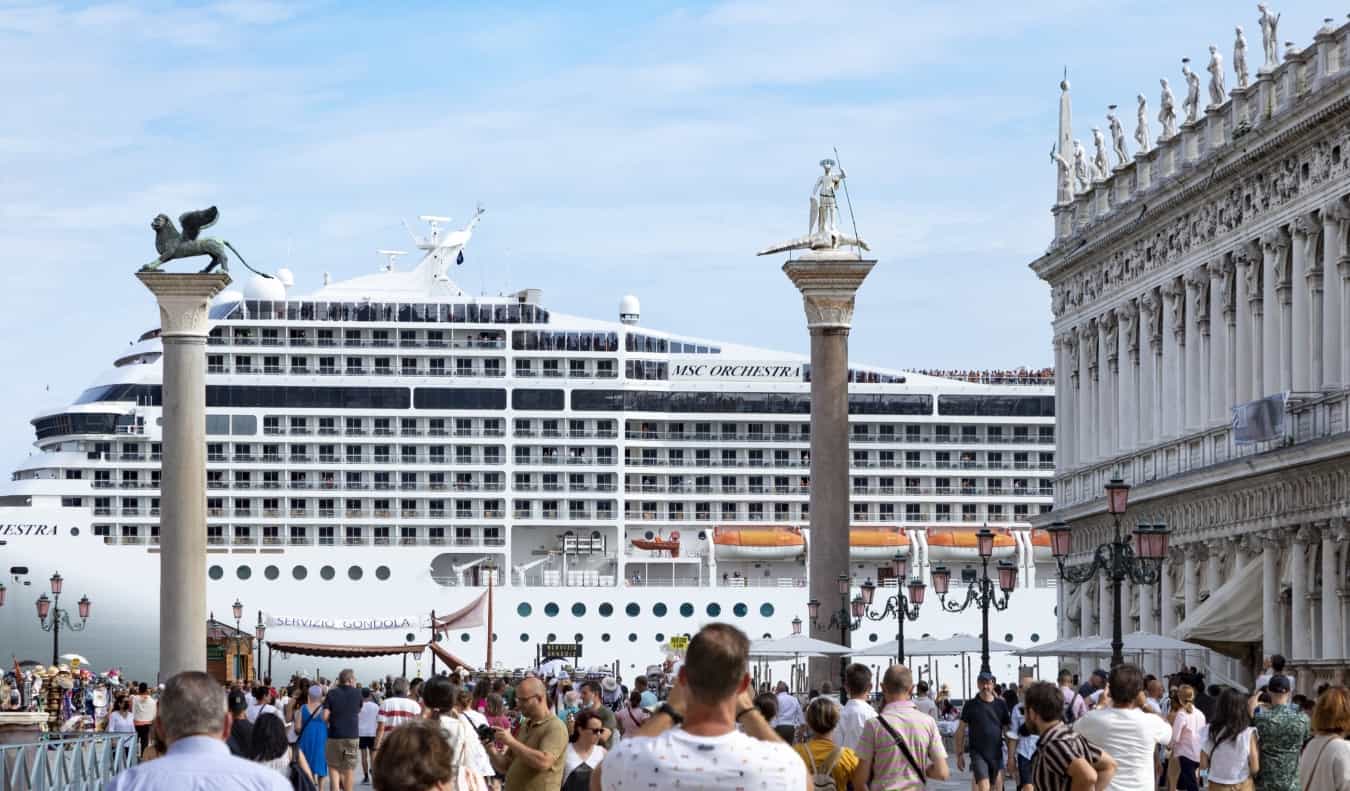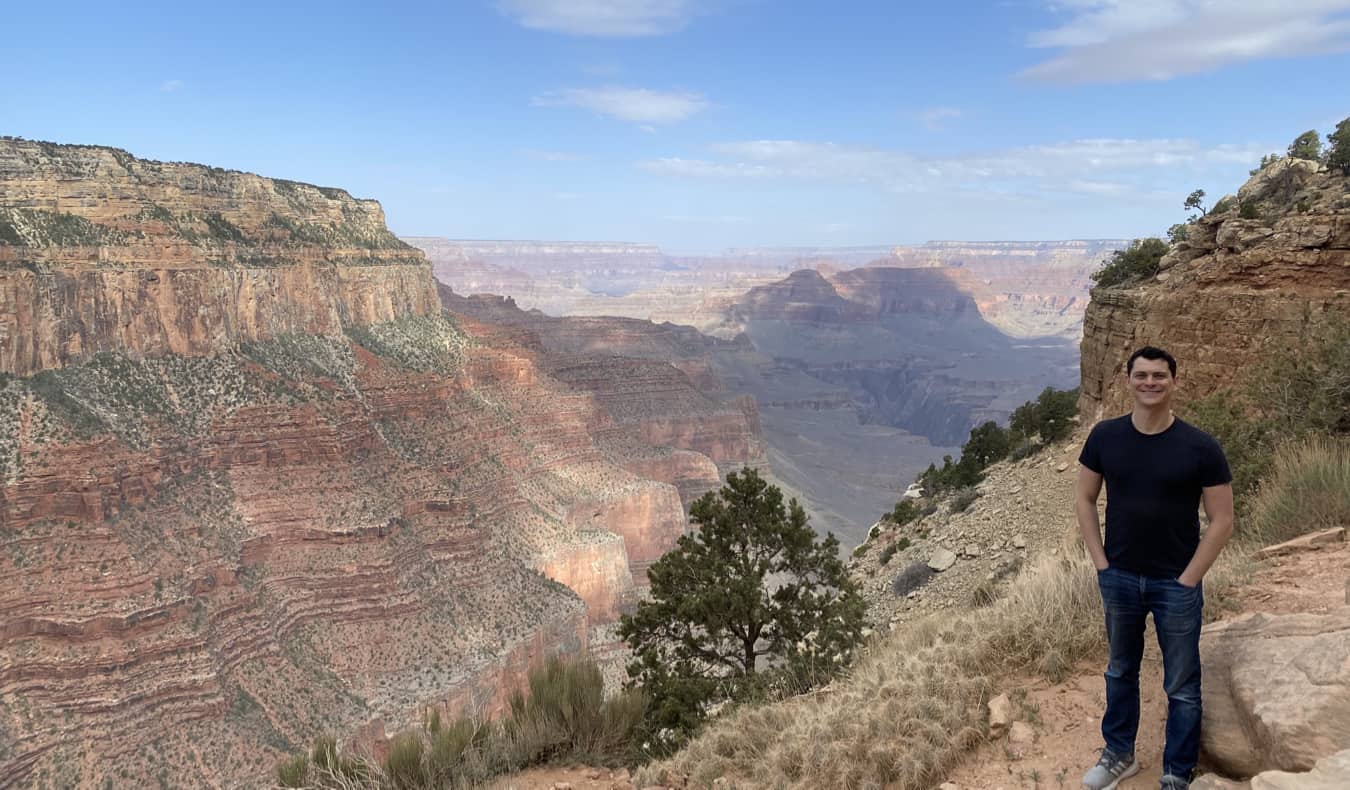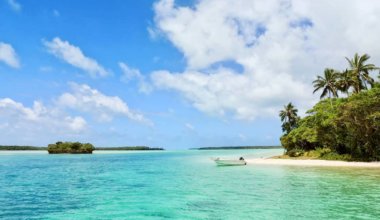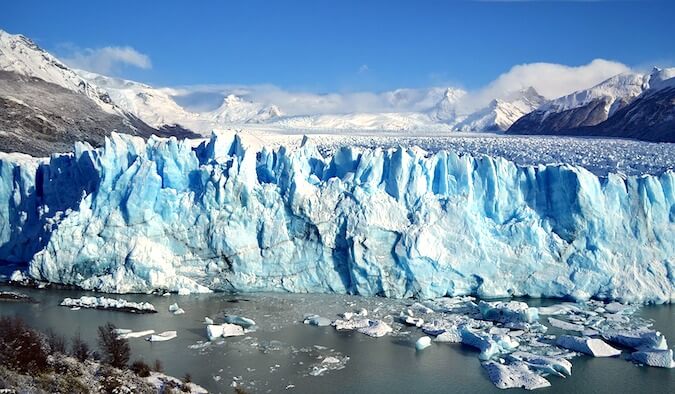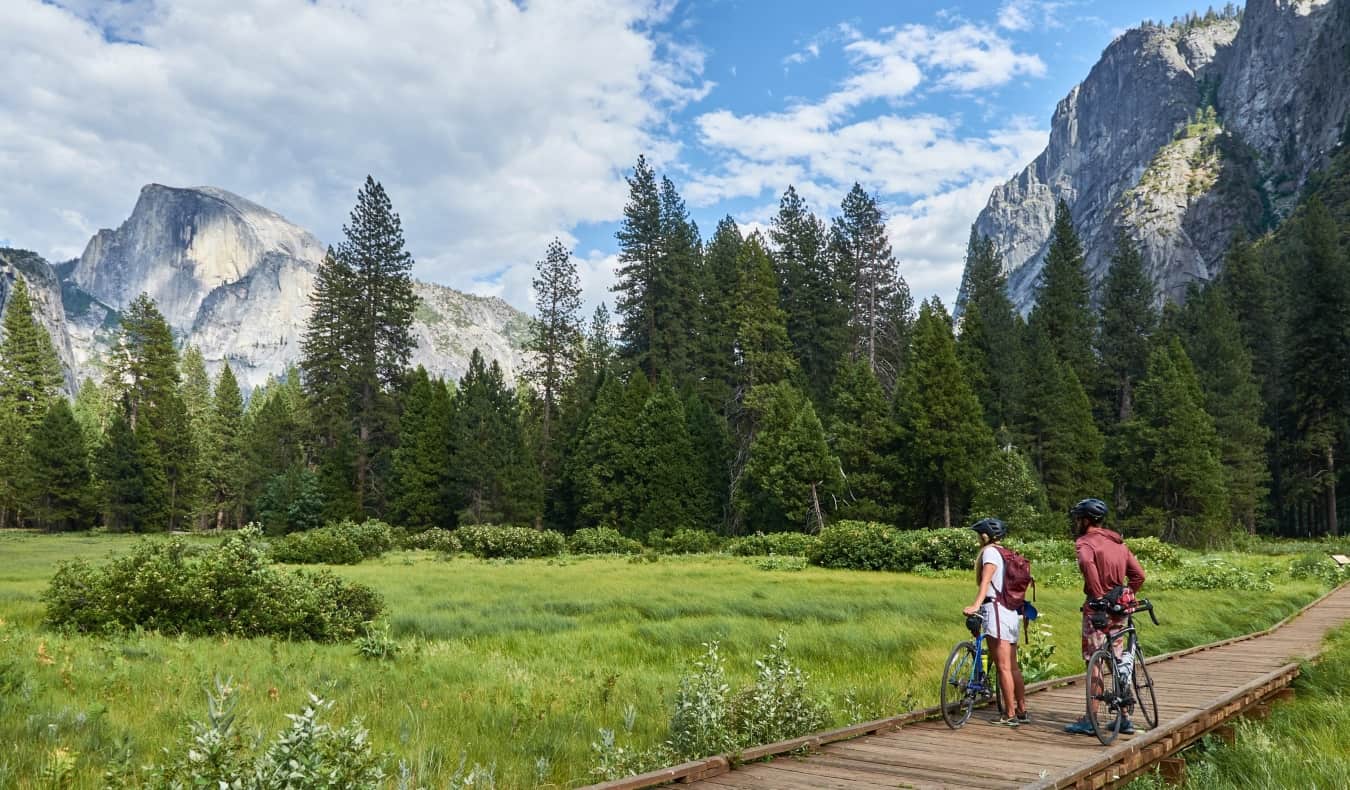
Last updated: 10/29/23 | October 29th, 2023
Environmentally friendly travel is now one of the fastest-growing movements in the industry, and I, for one, welcome this trend. It’s an incredibly important topic that I’ve been writing about for years.
After all, why destroy what you love? No one wants to see paradise paved over. We all cringe when we return to an overdeveloped, polluted destination. None of us want to contribute to that. Being an eco-friendly traveler is simply being a respectful traveler.
As we strive to become more environmentally conscious, the questions for travelers become:
Just how do we “green” our travels?
What can we do to lower our carbon footprint as we travel the world?
How can we better interact with the communities we visit?
What changes can we make that are actually helpful?
Flight shaming people is not the answer, but do we all just stay home and quit traveling? I don’t believe so.
In fact, there’s actually a lot we can do as travelers to reduce our ecological footprint while contributing to the sustainability of the communities we visit.
Here are 12 concrete ways to reduce your environmental impact as a traveler:
Table of Contents
- 1. Stay Close to Home
- 2. Make Greener Transportation Choices
- 3. Travel Slow
- 4. Pack Smart to Reduce Plastic Use
- 5. When You Fly, Do So More Sustainably
- 6. Avoid Overvisited Destinations
- 7. Stay at locally owned accommodation
- 8. Eat Local
- 9. Cut Back on Meat and Dairy
- 10. Avoid Animal Attractions
- 11. Cut Back on Cruises
- 12. Take a Nature-Related Trip
1. Stay Close to Home
Though the “exotic and different” is always appealing, travel doesn’t have to be about going somewhere far away. Travel is the art of exploration, discovery and getting out of your comfort zone, all of which can just as well be nearby. Find somewhere close to home you haven’t been, get in your car (or better yet, take the bus), and go visit. You never know what you’ll come across!
During the pandemic, we all learned to love traveling close to home. I myself road-tripped across the country, exploring destinations I’d never seen before (especially national parks, since it was the best way to avoid people). I’ve road tripped around the US a few times now and have learned a lot. I’ve even had some of my own misconceptions overturned just by traveling close to home.
You don’t have to go abroad to travel. Start at home. You might just be surprised what you discover.
2. Make Greener Transportation Choices
After walking, public transportation is the next best way to explore new destinations. Not only is it better for the environment, but it’s more culturally immersive (and cheaper) as well. When it comes to longer distances, buses and trains are your best way of getting around, both of which can be quite an experience in and of itself. In the U.S. and Europe, companies like FlixBus and Megabus always have cheap tickets if you book in advance.
When traveling by car, consider offering rides to (or getting rides with) other travelers to lower your collective emissions and cut costs. Ridesharing is a fun way to connect with locals and other travelers going the same direction. Use platforms like BlaBlaCar and Craigslist to find rideshares near you. If you’re staying in a hostel, see if there’s a bulletin board, group Whatsapp chat, or just ask around to see if anyone wants to carpool.
If you do need a taxi to get around a city, use the “pool” option offered by Uber and Lyft in many cities. This lets you split your ride with other travelers, and while it may take a little longer to get to your destination, it will save you money and make your taxi ride more eco-friendly.
Avoid flying or driving long distances by yourself whenever you can. These are the two least sustainable ways to travel.
Related posts:
- A Complete Guide to the Japan Rail Pass
- A Complete Guide to the Eurail Global Pass
- How to Get Around Southeast Asia on the Cheap
3. Travel Slow
When we travel abroad, we have a tendency to rush around from place to place, trying to soak in as many sights as possible.
I get that.
After all, not everyone can be a permanent nomad, and when you have limited time and aren’t sure if you’re coming back again, I can see why people “travel fast.”
However, not only does this raise your transportation costs since you’re moving a lot, you end up increasing your carbon footprint. All those trains, buses, and planes add up. The fewer you take, the better.
Traveling to fewer destinations is good not only for your wallet and the climate, it’s good for local communities as well. Being a responsible traveler not only means reducing your carbon footprint but also doing good by the communities you visit. Day-tripping brings in very little money to communities but impacts their infrastructure heavily. (It’s why Venice will start charging day trippers a fee in 2024). So try to stay at a destination for at least a night.
Slowing down your travels allows you to get to know places in a deeper way. In travel, less can be more.
4. Pack Smart to Reduce Plastic Use
I hate plastic. It creates a ton of waste. From plastic bottles to toothpaste tubes to shopping bags, plastic sucks. I admit I’m not perfect, and I still use too much, but I’m always trying to reduce my consumption (both at home and abroad). Avoiding plastic as much as possible is a great way to reduce your environmental impact.
While the specifics will depend on where you’re going, here are a few things you can bring to help you travel more sustainably:
- Reusable water bottle with a built-in filter – Many destinations don’t have potable water, which means you’re going to be buying tons of single-use plastic water bottles. Instead, bring a Lifestraw bottle with a built-in filter, or a SteriPen that you can use with any bottle you already have. These devices purify your water so you can drink from practically anywhere, ensuring you can avoid single-use plastic bottles.
- Tote bag/stuff sack – If you’re traveling long-term, bring a tote bag or an extra stuff sack. You can use them for buying groceries and avoid plastic bags. At other times, they can be used to keep your bag organized.
- Menstrual cup – While I can’t speak from personal experience, a reusable menstrual cup is something our resident solo female travel expert packs when she travels, since menstrual products are not always available (and can also be quite wasteful).
- Solid toiletries – Solid shampoo, conditioner, lotion, even toothpaste tablets not only help you avoid all those plastic bottles, but are great for carry-on only travel (no paying attention to liquid size limits). Depending on when you get them, they might even be refillable.
- Bamboo Utensils – Travel cutlery (a fork, knife, and spoon, or just a spork or a set of chopsticks) can come in handy if you’re on a budget and plan on cooking your own meals. But they’re also useful for street food and eating out, as you can avoid plastic cutlery.
- Small Tupperware container – I always find myself with extra food when I cook in hostels. Putting my leftovers in a container helps avoid waste and provides food for the next day. It’s an amazing travel tip surprisingly few people make use of.
5. When You Fly, Do So More Sustainably
While I don’t believe in flight shaming, it’s impossible to deny that flying does have a hefty carbon impact. In addition to limiting your flying, try to use longer flights with fewer connections. A significant portion of airplane emissions occur during takeoff and landing, which means if you fly shorter flights with more connections, your emissions will be drastically higher. Flying direct is simply the better option environmentally, so opt for that whenever possible.
Other ways to fly more sustainably include:
- Choose more efficient aircraft – Newer planes use less fuel, creating fewer emissions than the same route on an older carrier. Skyscanner (my favorite flight search engine) highlights flights with less emissions when you do a search.
- Pack less – More weight = more fuel needed. Whenever possible, pack less.
- Offset your flight – Carbon offsets aim to cancel out the effect of the emissions that you’re creating by taking that flight. It’s a tricky topic, as not all offsets are created equal. Always purchase offsets separately (rather than simply ticking the box when purchasing the flight) and choose a reputable company. And make sure to research where you buy your offset from.
6. Avoid Overvisited Destinations
If you can, avoid places grappling with overtourism. You’ll find fewer crowds and lower prices, and you also won’t be putting as much strain on local communities struggling to keep up.
And, from a sheer personal-enjoyment point of view, who wants to deal with crowds or long lines? No one.
Visiting less-visited destinations, such as “second cities” (the second- biggest or most important city in a country), can be much more enjoyable and rewarding to visit.
I try to look for nearby cities that people don’t really talk about a lot and go there. For example, you head to Lyon over Paris or Bologna over Venice or Memphis over Nashville. There are endless examples of places you can visit. Not only will you get a less touristy experience, you’ll help local communities.
7. Stay at locally owned accommodation
I always advocate for staying in locally owned accommodations wherever you go, but this is especially important when visiting overtouristed destinations like Barcelona or Paris, where residents are struggling to afford housing.
Around the world, short-term apartment rentals drive up rents for locals and force them out of the city center. It’s gotten so bad in places that many cities are restricting Airbnb to protect residents. Stick to locally owned hotels, guesthouses, bed & breakfasts and hostels instead of using sites like Airbnb.
Unless you’re going to share accommodation with a local by using Couchsurfing, staying at locally-owned accommodation gives back directly to the community you’re visiting. Plus, you’ll have someone on hand to answer all your questions so that you can get even deeper into the place and culture.
If you have to use a site like Airbnb, use the “Rooms” feature. It lets you search for listings in people’s homes or guest houses. It’s like how Airbnb used to be — people renting out extra rooms or guest houses for added cash. You always get your own room and, sometimes, a private entrance. You’ll also get to interact with your host, who can provide lots of insider tips and insight to your destination. Plus, you don’t contribute to overtourism by taking housing off the market for locals. It’s a triple win.
8. Eat Local
Food that is imported has a much higher carbon footprint than locally grown food (and it’s usually not as fresh either). To keep your carbon footprint down, eat like a local. Stick to foods that are grown locally, and avoid packaged and imported foods much as possible. This ensures that you’re eating seasonal produce, which is both the freshest and supports the local economy.
Sure, the odd Western comfort meal is not the end of the world, but the more you eat locally, the more you reduce your environmental footprint and the more you help the local economy as well. After all, you didn’t come to Thailand to eat a burger you could get at home, right?
And, while not as cost-effective as eating street food or cooking your own meals, I also like taking food tours when I travel. Doing so is like taking a crash course in the local cuisine, plus you get a local guide who can give you recommendations on other foods or eateries to check out after the tour ends.
Here are some of my go-to food tour companies:
You can also use EatWith, where locals post listings for dinner parties and specialty meals that travelers can join.
9. Cut Back on Meat and Dairy
I’m not saying you need to go vegan. I love meat and never plan to give up sushi. But reducing your meat and dairy intake is extremely helpful. Livestock are responsible for an estimated 11-17% of global emissions, with ruminant animals and dairy accounting for over half of emissions from all food production.
So by cutting back on your meat and dairy consumption, you’ll drastically reduce your carbon footprint. (And especially avoid Brazilian beef if you can, as it generally comes from cleared rainforest land. Cattle ranching and growing soy for livestock feed are the biggest causes of rainforest deforestation in the world.)
Download the HappyCow app to find the best vegan and vegetarian options near you.
10. Avoid Animal Attractions
Part of traveling responsibly is helping the other creatures that inhabit his earth. That means you should avoid any and all attractions that use captive wild animals for entertainment. The most common offenders are riding elephants, swimming with dolphins, visiting captive whales, and petting (drugged) tigers.
These activities require animal abuse and imprisonment and should be avoided. Animals are typically kept in horrible conditions managed by inexperienced staff. Animal attractions exist to entertain tourists and therefore make money; they’re not sanctuaries or places concerned for the animal’s welfare. By visiting these institutions, we unintentionally become party to the system and perpetuate the cycle of abuse.
Animals are best viewed in their natural habitats. If you want to see them, go on a safari, jungle hike, gorilla trek or whale-watching tour and see the animals where they belong, in the wild.
If you want to be an ethical and responsible traveler, stick to taking photographs and avoid direct interactions with animals.
For more information on animal tourism and how to avoid it, check out these helpful organizations:
- World Animal Protection
- Wildlife Watch
- SPANA
- Save Elephant
- Born Free Foundation
- International Fund for Animal Welfare
11. Cut Back on Cruises
Cruises are one of the worst offenders when it comes to both carbon footprints and overtourism. One cruise ship emits as much greenhouse gases at 12,000 cars, creating more carbon emissions per passenger than a long-haul flight. Thanks to cruises, people and marine life are exposed to harmful pollutants, shortening their lifespans.
And that’s not to mention the dumping of toxic chemicals into the ocean’s waters or all the waste that comes from the all-inclusive nature of cruises.
To top it all off, day-trippers from cruises visits are overwhelming local economies, driving up prices, forcing out locals, and creating crowded destinations that are over-reliant on tourism, all while giving back very little (when you have already paid for all your meals and room on board, why spend extra in a destination?). Many cities are now trying to combat this by setting limits on cruise ship passenger numbers or charging a fee for them to get off the boat.
Don’t get me wrong: cruises are a fun way to travel. But cruise ship travel is only increasing, putting more strain on ports and the oceans. If you’re looking to lower your environmental footprint, you’ll want to avoid cruises as much as possible.
Travel is one of the best personal development tools there is. It opens you up to a whole new world and widens your perspective of so many things. People, culture, history, food, and so much more.
If you want to better understand and appreciate the natural world, try taking a trip with the sole purpose of connecting with nature. Head to the Australian Outback, go diving and swim around coral reefs, visit national parks, camp in the Moroccan desert, stay a few weeks in a town with little or no electricity, canoe down the Amazon River, or spend a few nights under the stars in a field close to home.
Do something that gets you in touch with the world in a way that sitting at home with all the electricity and free-flowing running water doesn’t. I promise that when you come home, you’ll have a new perspective on why we’re all so focused on being environmentally friendly these days.
It doesn’t take much to see that we are living unsustainably and something’s got to give. Going on a nature adventure can get you to think differently when it comes to the environment and how important it is for us to treat it well.
Traveling in a more green and eco-friendly way is something we should all aspire to. As travelers, it’s our responsibility to make sure that, while we explore the globe, we do so in a way that doesn’t harm the planet or the local communities that we visit.
With a few simple changes, you can all become better and more sustainable travelers. You just need to take that first step. Action begets action, and the more actions you take, the easier the other ones will be.
Book Your Trip: Logistical Tips and Tricks
Book Your Flight
Find a cheap flight by using Skyscanner. It’s my favorite search engine because it searches websites and airlines around the globe so you always know no stone is being left unturned.
Book Your Accommodation
You can book your hostel with Hostelworld. If you want to stay somewhere other than a hostel, use Booking.com as it consistently returns the cheapest rates for guesthouses and hotels.
Don’t Forget Travel Insurance
Travel insurance will protect you against illness, injury, theft, and cancellations. It’s comprehensive protection in case anything goes wrong. I never go on a trip without it as I’ve had to use it many times in the past. My favorite companies that offer the best service and value are:
- SafetyWing (best for everyone)
- Insure My Trip (for those 70 and over)
- Medjet (for additional evacuation coverage)
Want to Travel for Free?
Travel credit cards allow you to earn points that can be redeemed for free flights and accommodation — all without any extra spending. Check out my guide to picking the right card and my current favorites to get started and see the latest best deals.
Need Help Finding Activities for Your Trip?
Get Your Guide is a huge online marketplace where you can find cool walking tours, fun excursions, skip-the-line tickets, private guides, and more.
Ready to Book Your Trip?
Check out my resource page for the best companies to use when you travel. I list all the ones I use when I travel. They are the best in class and you can’t go wrong using them on your trip.
